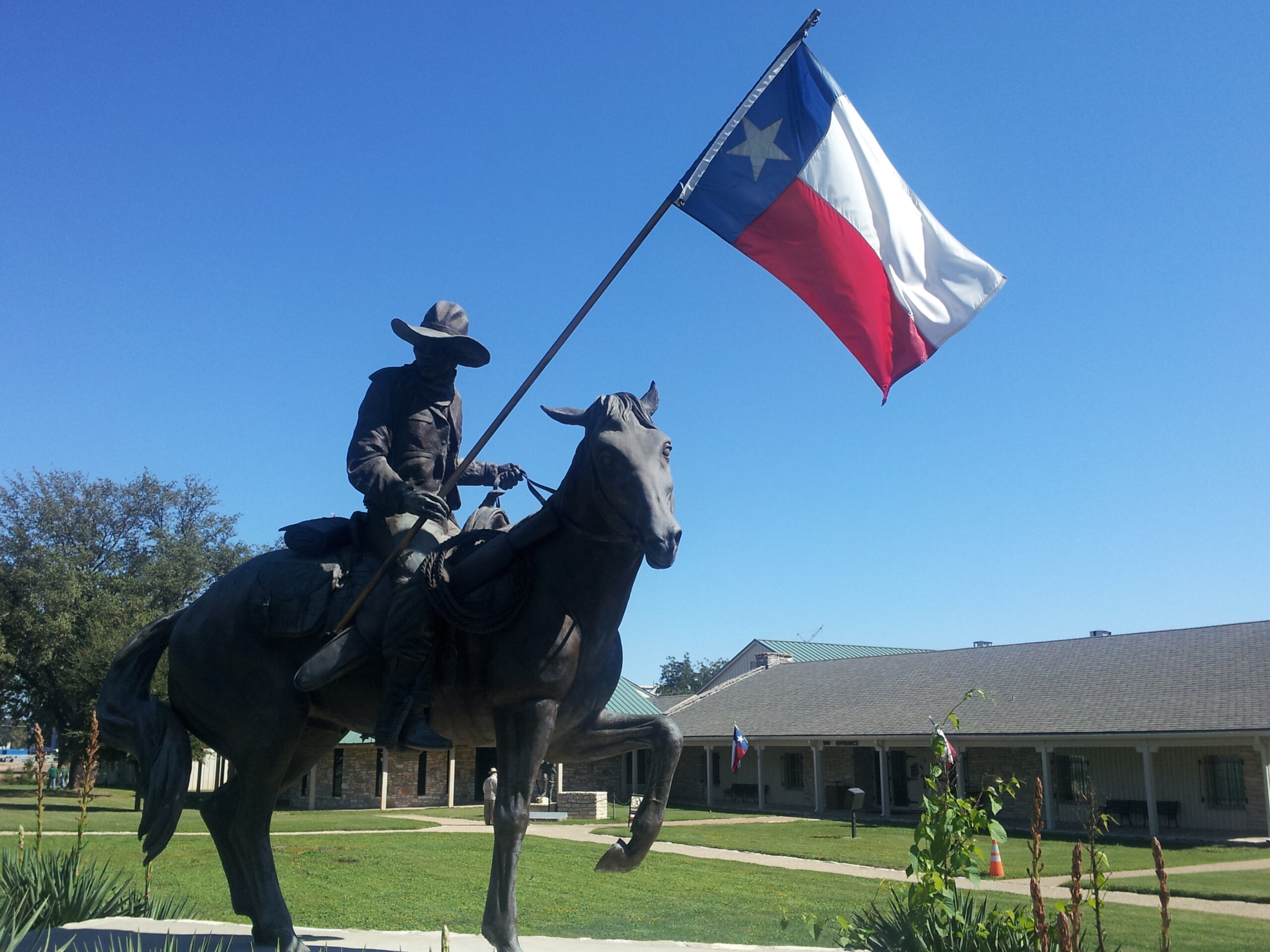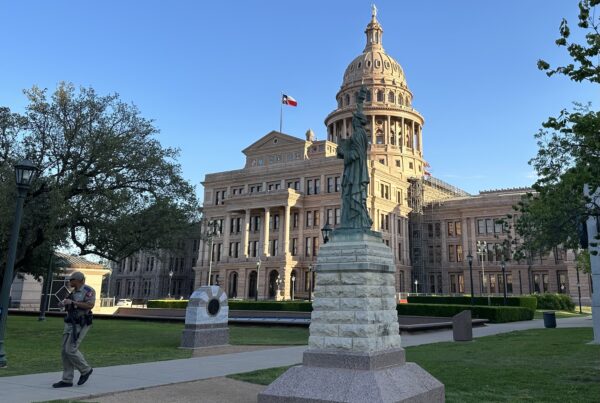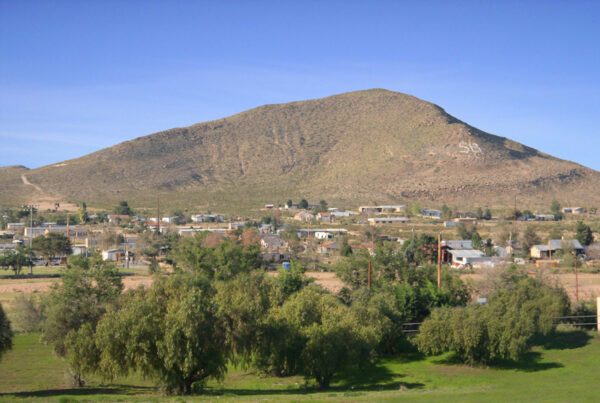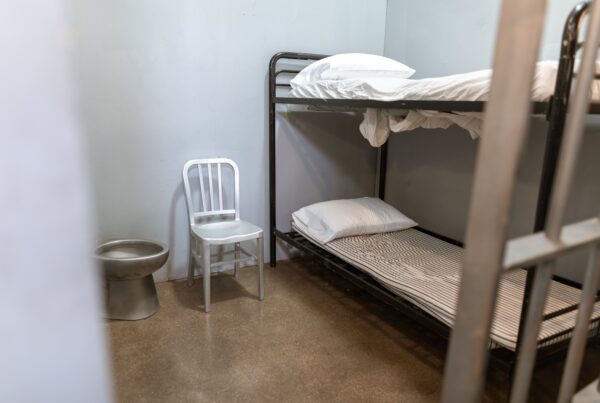Gabriel Daniel Solís has been tracking the legacy of the Texas Rangers in his hometown of Seguin with the help of two historians. He says they’ve found evidence the Rangers may have created a mass grave site of people fleeing slavery, Native Americans and Mexicans underneath what is now the city’s Chamber of Commerce parking lot. Solís has this commentary:
In recent years, Seguin’s government and prominent residents have gone to great lengths to associate the town’s history and reputation with the Texas Rangers. In 2019, Seguin city leaders used public funds to commission a mural honoring the Rangers on a prominent downtown building. And last year, the agricultural education and heritage center built a replica of a Texas Ranger outpost station originally built on the banks of a downtown creek. This weekend, Seguin’s historic Magnolia Hotel will host a re-enactment of Texas Ranger Jack Hays’ wedding to the daughter of the hotel’s original owners.
Not far from that hotel is a historical marker the city placed in 2010 to memorialize the “Ranger Oaks,” a cluster of old oak trees that today shade the parking lot of the local chamber of commerce. The marker reads, in part: “Under Ranger Jack Hays and James Callahan, a group of renegades and Indians were captured, brought to town, and forced to dig a trench in the area of the Ranger Oaks. The captives were then lined up and shot so their bodies fell into the trench, thus saving some trouble of the burial.”
So who were those captives? Historian María Hammack recently uncovered new evidence that two men who escaped slavery may have been killed and buried at the Ranger Oaks site in 1839. A lengthy journal record from a Seguin resident at the time details the killings. He describes three men – ages 16 to 60 who had reportedly escaped slavery years prior. They had been living as free men in Mexico until the Texas Rangers captured them and forced them back to Texas. The journal account says when the men were told they’d be sold back into slavery, the oldest man reportedly gave an eloquent speech to the Rangers about why they’d rather die. After making the captives dig their own graves, the Rangers executed both adults while the teenager watched. He was then sold back into slavery.
The journal entry describes the execution site as across a creek and up the slope west of town about half a mile… under a clump of live oaks. The description matches the site of the Ranger Oaks.
Thanks to the research of María Hammack, we know a little more about some of the people killed there – but the historical marker makes clear Indigenous people also faced a similar fate there at the hands of Texas Rangers.
Alongside Hammack, fellow historian Benjamin Johnson, as well as Black, Latino, and Indigenous leaders, we’re asking Seguin’s government to stop whitewashing these histories of violence and to stop celebrating these horrific murders, and instead follow the lead of other towns and cities in Texas and beyond that are working with communities to reckon with these violent histories. To continue to celebrate the history of the Texas Rangers with murals, monuments and reenactments is an insult to many Texans, especially the descendants of the Rangers’ many victims.















